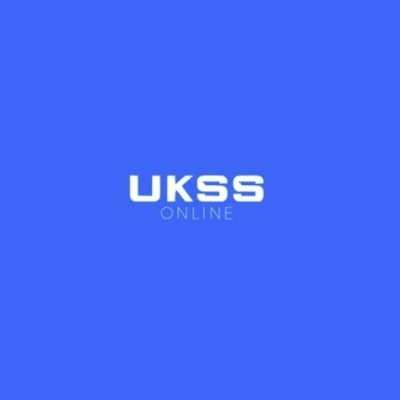Recent Updates
All Countries
All Countries
Afghanistan
Albania
Algeria
American Samoa
Andorra
Angola
Anguilla
Antarctica
Antigua and Barbuda
Argentina
Armenia
Aruba
Australia
Austria
Azerbaijan
Bahamas
Bahrain
Bangladesh
Barbados
Belarus
Belgium
Belize
Benin
Bermuda
Bhutan
Bolivia
Bosnia and Herzegovina
Botswana
Bouvet Island
Brazil
British Indian Ocean Territory
Brunei Darussalam
Bulgaria
Burkina Faso
Burundi
Cambodia
Cameroon
Canada
Cape Verde
Cayman Islands
Central African Republic
Chad
Chile
China
Christmas Island
Cocos (Keeling) Islands
Colombia
Comoros
Congo
Cook Islands
Costa Rica
Croatia (Hrvatska)
Cuba
Cyprus
Czech Republic
Denmark
Djibouti
Dominica
Dominican Republic
East Timor
Ecuador
Egypt
El Salvador
Equatorial Guinea
Eritrea
Estonia
Ethiopia
Falkland Islands (Malvinas)
Faroe Islands
Fiji
Finland
France
France, Metropolitan
French Guiana
French Polynesia
French Southern Territories
Gabon
Gambia
Georgia
Germany
Ghana
Gibraltar
Guernsey
Greece
Greenland
Grenada
Guadeloupe
Guam
Guatemala
Guinea
Guinea-Bissau
Guyana
Haiti
Heard and Mc Donald Islands
Honduras
Hong Kong
Hungary
Iceland
India
Isle of Man
Indonesia
Iran (Islamic Republic of)
Iraq
Ireland
Israel
Italy
Ivory Coast
Jersey
Jamaica
Japan
Jordan
Kazakhstan
Kenya
Kiribati
Korea, Democratic People's Republic of
Korea, Republic of
Kosovo
Kuwait
Kyrgyzstan
Lao People's Democratic Republic
Latvia
Lebanon
Lesotho
Liberia
Libyan Arab Jamahiriya
Liechtenstein
Lithuania
Luxembourg
Macau
Macedonia
Madagascar
Malawi
Malaysia
Maldives
Mali
Malta
Marshall Islands
Martinique
Mauritania
Mauritius
Mayotte
Mexico
Micronesia, Federated States of
Moldova, Republic of
Monaco
Mongolia
Montenegro
Montserrat
Morocco
Mozambique
Myanmar
Namibia
Nauru
Nepal
Netherlands
Netherlands Antilles
New Caledonia
New Zealand
Nicaragua
Niger
Nigeria
Niue
Norfolk Island
Northern Mariana Islands
Norway
Oman
Pakistan
Palau
Palestine
Panama
Papua New Guinea
Paraguay
Peru
Philippines
Pitcairn
Poland
Portugal
Puerto Rico
Qatar
Reunion
Romania
Russian Federation
Rwanda
Saint Kitts and Nevis
Saint Lucia
Saint Vincent and the Grenadines
Samoa
San Marino
Sao Tome and Principe
Saudi Arabia
Senegal
Serbia
Seychelles
Sierra Leone
Singapore
Slovakia
Slovenia
Solomon Islands
Somalia
South Africa
South Georgia South Sandwich Islands
Spain
Sri Lanka
St. Helena
St. Pierre and Miquelon
Sudan
Suriname
Svalbard and Jan Mayen Islands
Swaziland
Sweden
Switzerland
Syrian Arab Republic
Taiwan
Tajikistan
Tanzania, United Republic of
Thailand
Togo
Tokelau
Tonga
Trinidad and Tobago
Tunisia
Turkey
Turkmenistan
Turks and Caicos Islands
Tuvalu
Uganda
Ukraine
United Arab Emirates
United Kingdom
United States
United States minor outlying islands
Uruguay
Uzbekistan
Vanuatu
Vatican City State
Venezuela
Vietnam
Virgin Islands (British)
Virgin Islands (U.S.)
Wallis and Futuna Islands
Western Sahara
Yemen
Zaire
Zambia
Zimbabwe
-
Summer Outfits: Stay Cool and Stylish in the HeatWhen the sun is shining and temperatures are soaring, your wardrobe deserves a seasonal refresh. Summer is the perfect time to experiment with light fabrics, vibrant colors, and effortless styles that keep you feeling cool and looking fabulous. Whether you’re heading to the beach, lounging in the city, or traveling somewhere new, your Flowy Summer Maxi Dresses can be both functional...0 Comments 0 Shares 309 Views 0 ReviewsPlease log in to like, share and comment!
-
Vertabrae Sweatpants – The Perfect Seasonal OutfitIn the ever-evolving landscape of fashion, where comfort now reigns alongside style, sweatpants have undergone a radical transformation. Once relegated to the realms of gym sessions and lazy Sundays, they’ve become a fashion staple, especially when they’re thoughtfully designed to suit the shifting seasons. Enter Vertabrae Sweatpants—a fusion of ergonomic design, minimalist...0 Comments 0 Shares 472 Views 0 Reviews
-
Loverboy Beanie: A Symbol of Rebellion, Art, and Unfiltered ExpressionIn an era where fashion can often feel formulaic and dictated by fast trends, the Loverboy beanie stands out as a fierce act of defiance. It's more than just a piece of headwear—it’s a cultural signal, a wearable revolution birthed from the bold and surreal imagination of Charles Jeffrey. The Loverboy brand, which began as a fantastical London-based club night and transformed into a...0 Comments 0 Shares 478 Views 0 Reviews
-
0 Comments 0 Shares 479 Views 0 Reviews
-
0 Comments 0 Shares 484 Views 0 Reviews
-
JetBet: A Comprehensive Overview of the Online Betting PlatformJetBet is an emerging online betting platform that has garnered attention for its diverse offerings and user-centric features. Catering to a global audience, including players in regions like Bangladesh, JetBet aims to provide a comprehensive and secure betting experience. jtbet Diverse Betting Options JetBet offers a wide array of betting choices to suit various preferences:...0 Comments 0 Shares 490 Views 0 Reviews
-
Master AWS with Classroom Training at Firewall Zone Institute of IT!
Looking to boost your cloud computing skills? Join our AWS Training program and get hands-on experience with real-world scenarios. Learn from industry experts and become an AWS pro!
New Batch Starting From: 23rd June 2025
Practical, career-focused classroom training
Location: Firewall Zone Institute of IT
Address: Beside KFC & McDonald’s Building, Opposite Pillar No: 3, Mehdipatnam, Hyderabad, Telangana 500028
Email: info@firewall-zone.com
Phone: 040-23530263 | 8886192132
Website: https://www.firewall-zone.com/aws-training-in-hyderabad/
Flexible schedules available
Whether you're a beginner or an IT professional, this course will take your skills to the next level!
Enroll now and take the first step toward AWS certification!
#AWS #CloudComputing #FirewallZone #ITTraining #AWSCertification #CareerGrowthMaster AWS with Classroom Training at Firewall Zone Institute of IT! Looking to boost your cloud computing skills? Join our AWS Training program and get hands-on experience with real-world scenarios. Learn from industry experts and become an AWS pro! 💡 📅 New Batch Starting From: 23rd June 2025 🎯 Practical, career-focused classroom training 📍 Location: Firewall Zone Institute of IT 📍 Address: Beside KFC & McDonald’s Building, Opposite Pillar No: 3, Mehdipatnam, Hyderabad, Telangana 500028 📧 Email: info@firewall-zone.com 📞 Phone: 040-23530263 | 8886192132 🌐 Website: https://www.firewall-zone.com/aws-training-in-hyderabad/ 📅 Flexible schedules available 💻 Whether you're a beginner or an IT professional, this course will take your skills to the next level! 📢 Enroll now and take the first step toward AWS certification! #AWS #CloudComputing #FirewallZone #ITTraining #AWSCertification #CareerGrowth0 Comments 0 Shares 604 Views 0 Reviews -
Billionaire Studios Clothing | Up To 30% Off | Billionaire Studios SaleIntroduction to Billionaire Studios Clothing In the luxury streetwear fashion scene, Billionaire Studios Clothing combines urban aesthetics with upscale sophistication. A visionary collection of garments that bridges the gap between opulence and authenticity is offered by Billionaire Studios, where trendsetters and tastemakers search for the next cultural wave. Branded with hustle, resilience,...0 Comments 0 Shares 697 Views 0 Reviews
-
Syna World Central Cee – A Bold Evolution in Streetwear FashionSyna World Clothing Brand In a world full of fads and quick fashion, Syna World Clothing Brand stands out for its inventiveness and classic elegance. Modern design, sustainable living, and culture are celebrated by the Syna World movement. With its rich historical background and steadfast commitment to pushing the boundaries of contemporary style, this apparel brand has a storied...0 Comments 0 Shares 900 Views 0 Reviews
-
OVO Clothing | Drake Merch | October's Very Own CollectionOVO Clothing Fashion: Drake’s Luxury Streetwear Brand The OVO Clothing brand started as an extension of Drake’s music empire, functioning as a lifestyle reflection of his vision. The famous OVO owl emblem, which represents knowledge and mystery, is now synonymous with high-end streetwear and urban fashion. The company launched with caps, hoodies, and T-shirts but swiftly...0 Comments 0 Shares 1K Views 0 Reviews
-
Upgrade Your Volume with Perfect Hair Extensions for Thick HairWhen you have naturally thick hair, finding the right extensions can be a challenge. Many extensions are designed for thin or fine hair and may not blend well with heavier textures. That’s where hair extensions for thick hair come in. At RedoHair, we specialize in high-quality extensions that are made to match and enhance thick hair—without adding extra weight or compromising...0 Comments 0 Shares 1K Views 0 Reviews
-
Webflow Web Design Agency in ChicagoIn the fast-paced digital world, your website is often the first impression customers have of your business. For brands looking to blend design freedom with functionality, Webflow has become a game-changer. But using Webflow effectively takes more than just a great idea—it requires a skilled team who understands design, development, and marketing. That’s where a Webflow...0 Comments 0 Shares 1K Views 0 Reviews
More Stories





